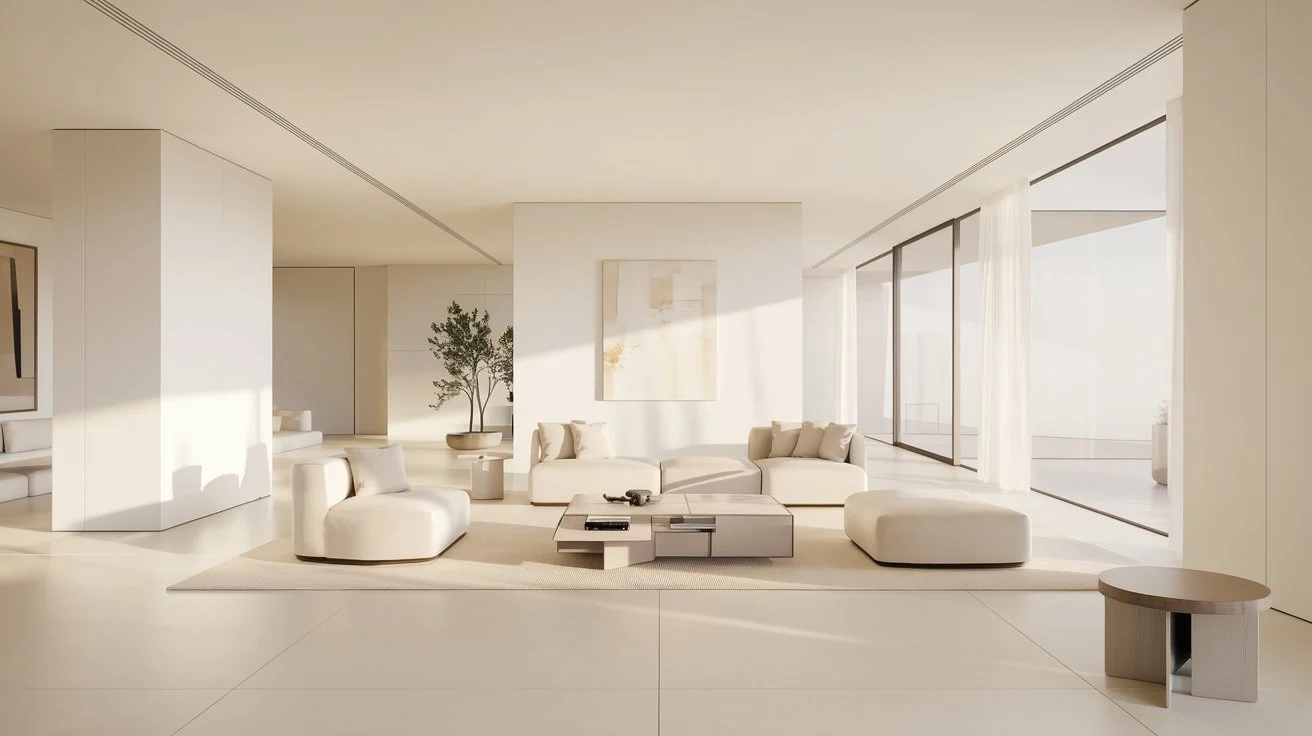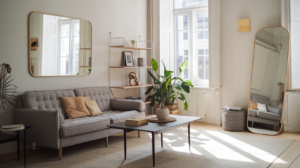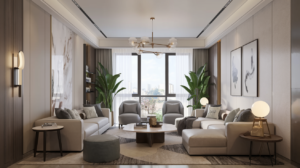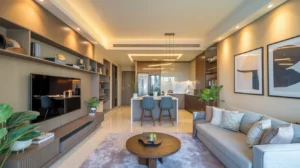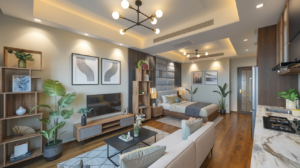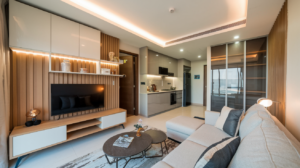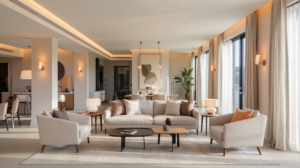The Growing Appeal of Minimalism in Modern Homes
In recent years, many people have turned their attention to minimalism when it comes to home design and lifestyle choices. This shift reflects a fundamental change in how we perceive our living spaces and what truly adds value to our lives. Minimalism emphasizes simplicity, functionality, and a refined aesthetic, leading to a growing appeal among modern homeowners. Here’s a deep dive into why minimalism is taking over modern homes.
The Stress of Clutter
One of the key reasons behind the rise of minimalism is the stress associated with clutter. Many individuals feel overwhelmed by the amount of stuff they accumulate over the years. A cluttered home can create a cluttered mind. By adopting a minimalist approach, you can enjoy a clearer space that promotes calmness and relaxation. Here are some benefits:
- Reduced Anxiety: A tidy environment often leads to a reduced feeling of stress.
- Increased Focus: Fewer distractions allow for better concentration on tasks.
- Ease of Cleaning: Less clutter means less to clean, which saves time and energy.
Functionality Over Aesthetics
Another compelling aspect of minimalism is its focus on functionality. Each piece of furniture or decor in a minimalist home serves a purpose. This philosophy not only maximizes the use of space but also eliminates wasted resources. Homeowners are asking themselves: “Does this add value to my life?” When unnecessary items are removed, living spaces become more enjoyable and practical.
Environmental Consciousness
Minimalism resonates with the growing awareness of environmental issues. Many people seek to reduce their carbon footprint and live sustainably. By choosing fewer, but higher-quality items, you support ethical brands that practice sustainability. Minimalist homes often feature:
- Eco-Friendly Materials: Using sustainable materials can lessen environmental impact.
- Energy Efficiency: Smaller living spaces are often easier to heat and cool, reducing energy costs.
- Support for Local Businesses: Buying less often encourages more thoughtful purchases from local artisans.
Timeless Design
Minimalism offers a timeless design aesthetic that never goes out of style. Simple lines, neutral colors, and an uncluttered look create a serene atmosphere. This style can be easily adjusted with accents, meaning you can refresh your space without a complete overhaul. For instance:
- Change Accessories: Add or remove accessories based on trends.
- Use Natural Light: Maximize light by keeping window treatments simple.
- Incorporate Nature: Bring in plants to add color without overwhelming clutter.
Affordability and Practicality
Minimalism can also lead to significant savings. You don’t have to spend large amounts on décor and furniture. Instead, focusing on a few high-quality pieces can help you save money in the long run. Here are a few practical tips:
- Invest Wisely: Choose quality over quantity when purchasing furniture.
- Opt for Multi-Functional Items: Furniture that serves multiple purposes can reduce spending.
- DIY Projects: Create your own decor using simple materials for a personal touch.
Mindful Living
The minimalist lifestyle encourages mindfulness. When you live with less, you focus on what truly matters. This can lead to deeper connections with family and friends. You also begin to appreciate experiences over material possessions. Consider activities like:
- Cooking Together: Share a meal and enjoy quality time without distractions.
- Outdoor Activities: Engage in nature and foster well-being through physical activity.
- Quality Conversations: Create meaningful dialogue rather than getting distracted by excess.
As modern homes adopt a more minimalist approach, the emphasis shifts towards creating a balance between aesthetics and functionality. The appeal of minimalism lies not just in the beauty of simplicity but also in the lifestyle it promotes. By choosing to embrace minimalism, you can create a haven that reflects your values and priorities while enjoying a more peaceful existence.
How Minimalism Improves Mental Clarity and Emotional Well-Being
Our homes hold a significant influence over our mental clarity and emotional well-being. In today’s bustling world, many people are turning to minimalism as a way to enhance their lives. So, how does minimalism improve mental clarity and emotional well-being? Let’s explore this idea and discover the profound impacts of living simply.
Reducing Clutter for a Clear Mind
The first step in embracing minimalism is decluttering your space. Clutter can overwhelm your senses and create feelings of stress. When you remove unnecessary items, you create a clearer space that allows for clearer thoughts. Here are some key benefits:
- Less Distraction: A clean environment minimizes distractions, enabling you to focus better on tasks at hand.
- Enhanced Productivity: Fewer items mean less time spent organizing, allowing you to use that time more effectively.
- Improved Mood: A tidy space often leads to a happier mindset, uplifting your spirits.
Simplifying Choices for Better Focus
In a world full of choices, minimalism can simplify your decision-making. When your surroundings are less cluttered, you’re less overwhelmed by options. You can focus on what truly matters. Consider the following:
- Easy Decision-Making: With fewer items to choose from, you can make faster decisions about what to keep and what to let go.
- Value on Quality: Minimalism encourages you to invest in fewer, high-quality items rather than a multitude of lesser-value pieces.
- Greater Intentionality: Each choice you make becomes more significant when you’re living with purpose.
Creating Peaceful Environments
Minimalism also allows you to create serene spaces that promote relaxation. Soft colors, ample light, and open spaces enhance feelings of tranquility. This type of environment can provide a retreat from the chaos of everyday life. Think about the following elements:
- Natural Light: natural light can elevate your mood and enhance your mental clarity.
- Comfortable Spaces: A minimalistic home can focus on comfort, where every piece has a purpose.
- Nature In Your Home: Adding plants can foster a calming atmosphere, positively impacting your mental health.
Mindful Living Through Minimalism
Embracing minimalism also encourages mindfulness. It compels you to be more present in your space and attentive to your surroundings. This mindfulness can drastically improve your emotional well-being. Consider these mindful practices:
- Intentional Consumption: When you focus on what you truly want, you become more aware of your purchases, which prevents impulsive spending.
- Mindful Decluttering: Reflecting on each item you own can help you release emotional clutter, aiding in mental clarity.
- Appreciation: Minimalism helps you appreciate the things you have, fostering a sense of gratitude and fulfillment.
Emotional Resilience Through Simplicity
Living simply can also enhance emotional resilience. When you let go of material possessions, you become less attached to the idea of success being linked to wealth or possessions. Instead, you begin to find value in experiences and relationships. This shift can lead to:
- Greater Contentment: You realize that happiness can be found in simplicity and is not tied to material goods.
- Stronger Relationships: Freeing up time and energy allows you to focus on the connections that truly matter.
- Enhanced Self-Awareness: Engaging in minimalism encourages you to reflect on your values and priorities, leading to personal growth.
Minimalism holds the potential to significantly improve mental clarity and emotional well-being. By reducing clutter, simplifying choices, creating peaceful environments, and embracing mindfulness, you can foster a lifestyle that prioritizes your mental health. In living simply, you can find strength, clarity, and an enriched way of being truly present in your life.
Essential Elements of Minimalist Home Design
Minimalist home design is a profound approach that focuses on simplicity, functionality, and sleek aesthetics. This style emphasizes the importance of each space and piece of furniture, creating an environment that is peaceful and serene. When you embrace minimalism at home, you’re not just decluttering; you’re developing a lifestyle that nurtures clarity and promotes well-being.
Open Spaces
One of the cornerstone elements of minimalist design is the use of open spaces. This doesn’t just mean having large rooms; it’s about creating fluidity and freedom within your environment. You can achieve this by:
- Opting for an open floor plan that connects living, dining, and kitchen areas.
- Using large windows to let natural light flood the space, which creates an airy feel.
- Choosing furnishings that are low profile and don’t crowd the area.
These choices contribute to a sense of openness, making your home feel larger and more inviting.
Neutral Color Palettes
Minimalism often employs neutral colors, which are calming and provide a backdrop for the home’s elements. You can incorporate shades of white, beige, gray, and muted pastels. Consider these tips:
- Paint your walls in soft neutral tones for a cohesive look.
- Use furniture and décor items in complementary hues to maintain harmony.
- Add texture through materials like wood, stone, or textiles rather than bold colors.
By sticking to a neutral palette, you not only create serenity but also highlight the simplicity that minimalism endorses.
Functional Furniture
In minimalist design, every piece of furniture you choose should serve a purpose. This not only declutters your space, but it also keeps your home organized. Consider these key aspects:
- Invest in multi-functional furniture, such as a coffee table that doubles as storage.
- Select furniture with clean lines and simple shapes, avoiding ornate designs.
- Limit the number of items to what you truly need, focusing on quality over quantity.
This approach helps you maintain a tidy and inviting atmosphere.
Natural Light and Biophilic Design
Integrating natural light into your home is essential to minimalist design. It promotes well-being and helps connect your indoor space with the outdoors. Here’s how to achieve this:
- Maximize window spaces to allow light to pour in.
- Consider using sheer curtains or no window treatments at all, ensuring clarity and brightness.
- Incorporate plants to bring nature indoors, enhancing air quality and adding a sense of serenity.
Emphasizing natural elements fosters a tranquil environment that is key to minimalist living.
Decluttering and Organization
At the heart of minimalism is the principle of decluttering. The idea is to limit possessions and keep only those things that serve a purpose or spark joy. To help you stay organized:
- Adopt a regular decluttering routine to evaluate what you truly need.
- Utilize hidden storage solutions to maintain a clean and orderly space.
- Label storage containers for easy identification, which prevents unnecessary rummaging.
By prioritizing organization, you can maintain a serene and functional home.
Quality over Quantity
In minimalist design, the focus shifts from having many possessions to cherishing a select few. This philosophy encourages you to invest in high-quality items that stand the test of time. Here’s how to implement this:
- Choose well-crafted furniture that is made to last and enhances your overall design.
- Select decorative items that truly represent your style and add value to your space.
- Avoid impulse buys by setting a budget and allowing time for reflection before purchasing.
When you prioritize quality, your minimalist home will not only look better but also feel more cohesive.
Minimalist home design is about more than just aesthetics. It’s a lifestyle choice that promotes clarity, tranquility, and purposeful living. By focusing on open spaces, neutral color palettes, functional furniture, natural light, and conscientious organization, you can create a home that feels balanced and inviting. Embrace minimalism and realize the potential of your space in a meaningful way.
Overcoming Common Misconceptions About Minimalism
Many people have heard about minimalism, but they often hold misconceptions that prevent them from understanding its true value. Minimalism is more than just a trend; it’s a lifestyle choice that can enrich your life in numerous ways. By examining and overcoming these common misunderstandings, you can discover how embracing minimalism can lead to a more fulfilling existence.
Minimalism Means Living in an Empty Space
A widespread belief about minimalism is that it requires one to live in stark, empty spaces devoid of personal touches. This view couldn’t be further from the truth. Minimalism is about simplifying your life and focusing on what truly matters to you.
Many minimalists curate their belongings to reflect their personal styles, creating spaces that feel both inviting and serene. A minimalist home may have fewer items, but each piece is intentional and brings joy to the homeowner. Instead of emptiness, minimalism celebrates meaningful experiences and connections rather than mere possessions.
It’s Only for Young People
Another misconception is that minimalism is primarily for the younger generation—college students or single professionals. However, minimalism is a flexible approach that anyone can adopt regardless of age or life situation. Whether you’re a busy parent, a retired individual, or living on your own, minimalism can offer immense benefits.
People of all ages are finding that reducing clutter helps alleviate stress. By focusing on quality over quantity, individuals can create homes that reflect their values and enhance their quality of life. Adopting minimalism can lead to less financial strain, more time for hobbies, and stronger family bonds.
Minimalism Requires Extreme Sacrifices
Many assume that becoming a minimalist means making extreme sacrifices or selling all their belongings. While some choose to adopt a rigorous approach, minimalism can be customized based on your preferences. It is not a one-size-fits-all approach.
- Start small: You can begin by decluttering one room or area at a time.
- Set personal goals: Determine what minimalism means to you and create a plan that aligns with your vision.
- Make gradual changes: Reducing items gradually allows you to adjust to the changes and find balance.
This personalized journey makes minimalism accessible to everyone. By viewing minimalism as a way to simplify rather than as a strict rule, you can enjoy its benefits on your own terms.
It’s Just a Trend
Some people dismiss minimalism as a passing fad. While it has gained popularity recently, the philosophy is rooted in deeper values. Minimalism promotes sustainable living, mindfulness, and personal growth. Before it became a trend, many cultures throughout history have embraced minimalist principles.
By focusing on the essentials, minimalism encourages people to consider the impact of their choices on the environment. For example, opting for fewer high-quality items rather than mass-produced goods can lead to less waste and promote awareness about consumption.
Minimalism Equals Boring
Another common belief is that minimalism leads to dull and uninspired living. On the contrary, minimalism opens the door for creativity. When you remove distractions and excess, you create space for new ideas and experiences.
Minimalists often discover that they have more time to engage in hobbies or connect with loved ones. They can focus on what ignites their passion rather than being bogged down by a cluttered environment. This newfound freedom can lead to a more vibrant and fulfilling life.
Final Thoughts
Overcoming misconceptions about minimalism can lead to a clearer understanding of its meaning and benefits. Minimalism isn’t about deprivation; it’s about finding joy in simplicity. By prioritizing what matters most to you, you can create a more meaningful and fulfilling life.
As you explore minimalism, remember that it can be tailored to fit your needs and values. Embrace the journey, and you’ll discover that simplicity often leads to the richest experiences.
Practical Tips for Transitioning to a Minimalist Lifestyle
Transitioning to a minimalist lifestyle can seem daunting, especially when you’re surrounded by things you might not even remember acquiring. However, embracing minimalism isn’t just about decluttering; it’s about simplifying your life and finding peace in more clarity. Here are some practical tips to help you smoothly transition into a minimalist lifestyle.
Start with Your Mindset
Before you begin decluttering, prepare your mind for the journey ahead. Minimalism is not merely a physical act. It requires a shift in how you view your possessions and space.
- Identify Your Why: Ask yourself why you want to embrace minimalism. Is it for reducing stress, saving money, or creating a peaceful environment? Knowing your motivation helps keep you focused.
- Practice Gratitude: Acknowledge what you already have and appreciate it. This makes it easier to let go of items that no longer serve you.
Decluttering Your Spaces
Once you have the right mindset, tackle your spaces one at a time. Taking small steps will prevent you from feeling overwhelmed.
- Room by Room: Pick one room to focus on rather than attempting to declutter your entire home at once. For instance, choose your bedroom or kitchen and stick with it.
- Use the Four-Box Method: Get four boxes labeled ‘Keep’, ‘Donate’, ‘Sell’, and ‘Trash’. As you go through your belongings, place each item in the appropriate box. This makes the process organized.
- One In, Two Out Rule: For every new item you bring into your home, consider letting go of at least two. This helps maintain a balance and makes you more mindful of your purchases.
Mindful Shopping Habits
Once you’ve cleared out unnecessary items, changing your shopping habits can solidify your transition to minimalism. You want to avoid falling back into old habits of accumulating more.
- Create a Shopping List: Always make a list before shopping to stay focused on your needs rather than wants.
- Think Long-Term: When considering a purchase, ask yourself if the item will add long-lasting value to your life. If not, it may be better to pass.
- Limit Exposure: Unsubscribe from promotional emails and avoid browsing online shops. Less exposure to new products means less temptation.
Designing Minimalist Spaces
After decluttering, it’s time to rearrange your living spaces. A minimalist home should feel open and inviting.
- Choose Quality Over Quantity: Invest in fewer but high-quality items that are durable and meaningful to you. This reduces clutter and adds character.
- Use Multitasking Furniture: Consider furniture that serves double duty, such as ottomans that have hidden storage. This helps keep surfaces clear.
- Neutral Color Palettes: Stick to simple, neutral colors for your walls and furnishings. This creates a calm and cohesive environment.
Adopting a Minimalist Mindset in Daily Life
Living a minimalist lifestyle extends beyond your physical space. It’s also about simplifying your daily routine.
- Simplify Your Schedule: Evaluate your commitments. Prioritize what truly matters and say no to activities that drain your energy.
- Practice Mindfulness: Spend time reflecting on what you truly value each day. This can reduce anxiety and lead to more purposeful living.
- Digital Decluttering: Your digital space may need attention too. Unsubscribe from unnecessary emails and delete apps you don’t use.
Transitioning to a minimalist lifestyle is a process, not a destination. As you implement these practical tips, remember to be gentle with yourself. Minimalism is about quality of life, not perfection. Enjoy the journey towards a simpler, more fulfilling life as you embrace the beauty of minimalism in your modern home.
Conclusion
Embracing minimalism in modern homes presents a unique opportunity to transform not only our living spaces but also our inner lives. The growing appeal of minimalism stems from its ability to create a warm, inviting atmosphere that promotes peace and serenity—qualities we often seek in our busy world. By reducing clutter and distraction, minimalism fosters mental clarity, helping to alleviate stress and enhance emotional well-being.
Understanding the essential elements of minimalist home design—such as open spaces, natural light, and functional furnishings—can significantly elevate our living experience. As we dismantle common misconceptions about minimalism being cold or stark, we see how it can reflect personal style and warmth while remaining practical and adaptable.
Transitioning to a minimalist lifestyle can feel daunting, but practical tips can ease the process. Start by assessing your belongings, decluttering those items that no longer serve you, and investing in quality essentials that enhance your daily life. Remember, minimalism is not just about owning less but creating more space for the things that truly matter—peace, craftsmanship, and personal connections.
Ultimately, as you simplify your home, you also simplify your mind, creating an environment where you can thrive. By opting for minimalism, you open the door to a life filled with intention, clarity, and joy. It’s a journey worth taking, where less truly becomes more.
